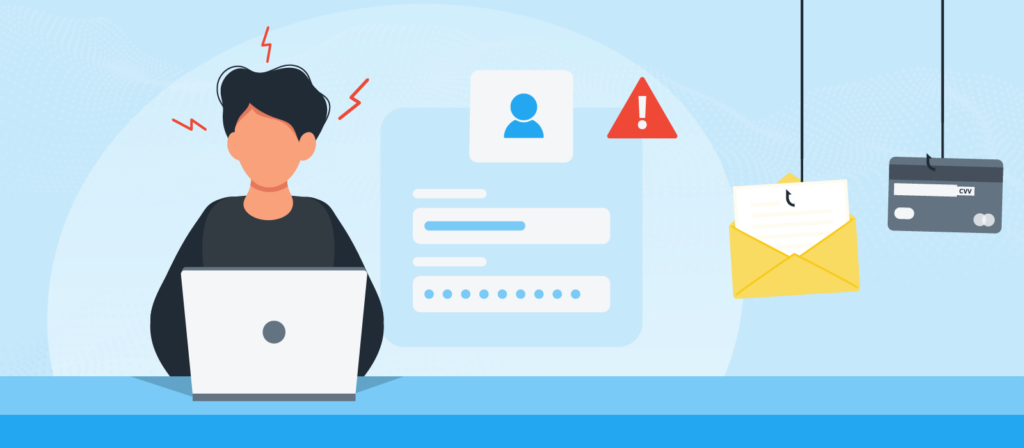What is Lead Fraud?

The digital advertising space is loaded with fraud. Ad fraud comes in many forms and needs to be combated with solutions specific to each type. While fraudulent impressions and clicks are all common forms of ad fraud, this post is dedicated to a type of fraud unique to online lead generation – we refer to it as “lead fraud.”
If you acquire leads from partners that host the form collecting the lead, you are at risk. It doesn’t matter if you are buying web leads for your outbound sales process or opt-in subscribers for your email newsletter, if someone else hosts the form and sends you the data, you could be the victim of lead fraud. The company that hosts the form has total control over how the lead is collected, so the challenge is you must hope they do what they promise.
What is lead fraud?
Lead fraud exists when a lead provider misrepresents how they collect a lead. There are many aspects of the lead generation process that can be misrepresented to the lead buyer that will benefit the seller and hurt you, as the buyer. They can misrepresent the lead authenticity, site origin, lead age, offer presentation, collected data, and more. Any one of these factors can dramatically affect the value of the lead you are buying. Let’s review in more detail:
Lead Authenticity
This refers to whether the lead was created by an interested consumer filling out a form. It is common for fraudsters to try and pass off lists as opt-in leads. If a provider can buy cheap lists for pennies per record and pass them off as expensive opt-in internet leads, they can make a lot of money. How do you know whether the lead you just received actually completed a form? Another common variation of this type of misrepresentation is to sell “opt-out” leads as “opt-in” leads. Pre-checking the opt-in box for an offer will greatly increase the number of leads while also reducing the quality. There are many other variations of misrepresenting the authenticity of the lead, but these two examples illustrate the basic problem.
Site Origin
The site URL is the website address where the lead was collected. It is a critical piece of information because the site controls the consumer experience. Since the biggest driver in lead quality is the intent of the consumer, you obviously want the leads where the consumer is truly interested in your product or service. Yet many lead buyers have no idea where their leads originate. It is very common for lead vendors to misrepresent the sites where the leads are collected. They might show a buyer a site that looks great, and then buy or generate the leads elsewhere.
Lead Age
The general rule in online lead generation is to contact the lead as quickly as possible. There are several published studies demonstrating that the quicker the contact, the higher the conversion rate. What if your lead vendor is providing you aged leads? If so, these leads are less valuable because they will likely have a lower conversion rate. Some vendors sell aged leads at a discount. These leads could pass through a middleman and be offered as real-time leads. Often buyers put daily volume caps on the number of leads they will receive. A lead vendor that hits their cap might simply hold the excess leads they captured until the following day. How would you ever know?
Offer Presentation
Offer presentation refers to what is being shown to the consumer on the form. One way to increase form completion rates is to make the offer more attractive to the consumer. There are many ways to do this. One way to do this is to minimize or remove the components of the offer that might be perceived as negative by the consumer – the costs, required contracted term, legal disclosures, etc. Was your privacy policy and the proper legal disclosures (TCPA) displayed on the form? Another approach is to offer incentives to the consumer to fill out the form. Was the consumer offered incentive such as points or a chance to win a sweepstakes to complete your form? It’s important to verify how your offer is being presented to the consumer to make sure it meets your requirements.
Collected Data
Collected data refers to the information that is input by the consumer on the form itself. As the lead buyer, you want to receive authentic data as submitted by the consumer. However, this information can be manipulated. Typically the more fields collected on the form, the lower the form completion rates. One way to increase completion rates is to minimize the data collected by the consumer and falsify additional data required by the buyer. For example, let’s assume your offer collects the consumer’s shopping preference (favorite retailer). The lead vendor could leave that field off the form and randomize fake responses. It would be difficult to catch this type of behavior without seeing exactly what the consumer saw on the form.
In summary, there are many variations of lead fraud, many more than the variations mentioned above. Even if you work with a trustworthy partner, they might be sourcing some of their leads from companies that employ some of these tactics. The best protection is to verify what you are buying. You should be able to verify when and where a lead was collected, what was presented to the consumer and how the consumer interacted with the form. We created the concept of independent lead certification so that lead buyers could protect themselves from lead fraud.


